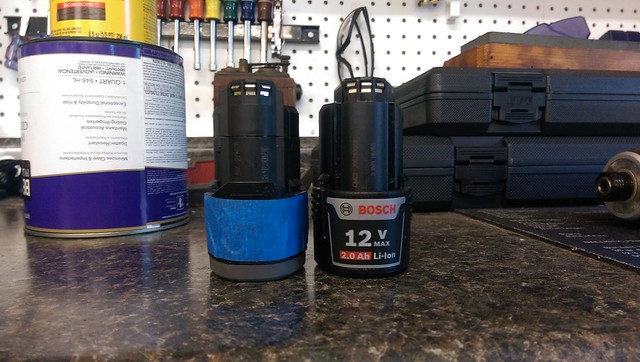I’ve worked with both Bosch 12V and Milwaukee M12 tools for years on jobsites and DIY benches. Here’s the straight talk you came for: are Bosch and Milwaukee 12V batteries interchangeable? No, not natively. The mounts, contacts, and electronics are different. You can use third-party adapters, but they come with trade-offs I’ve seen firsthand. Stick with me, and I’ll make the choice clear, safe, and wallet-smart.

Source: www.youtube.com
Contents
- The Short Answer (And Why It Matters)
- How 12V Platforms Differ Under The Hood
- What About Third-Party Adapters?
- Safety, Warranty, And Charging Rules You Shouldn’t Bend
- Real-World Tests: What Worked And What Flopped
- Choosing Your Platform: A Simple Decision Path
- Care, Maintenance, And Long Life Tips
- Frequently Asked Questions Of Are Bosch And Milwaukee 12V Batteries Interchangeable
- Wrap-Up: Make A Smart, Safe Choice
- Watch This Video on are bosch and milwaukee 12v batteries interchangeable
The Short Answer (And Why It Matters)
No, Bosch 12V (formerly labeled 10.8V) and Milwaukee M12 batteries are not cross-compatible out of the box. The pack shapes, locking rails, and contact layouts differ. The battery management systems also use different signaling. If you try to slot one into the other, it won’t fit, and forcing it is a bad idea.
Adapters exist. They can let a Bosch 12V pack run an M12 tool, or vice versa. But they often limit performance, may disable protection features, and can void warranties. Use them only if you accept the risks and know the limits.

Source: www.reddit.com
How 12V Platforms Differ Under The Hood
Both Bosch 12V and Milwaukee M12 use lithium-ion cells with a nominal voltage around 12V. That’s where the similarity ends for interchangeability.
- Physical interface: The rails, latch design, and footprint are brand-specific. A snug click-in fit is a safety feature, not a coincidence.
- Electrical contacts: Both use positive and negative terminals plus data or thermistor lines. The communication logic and pin mapping are not the same.
- Battery management system: Each brand’s pack has its own protections for over-current, over-voltage, and temperature. Tools and packs talk to each other. Cross-brand use can disrupt that handshake.
- Chargers: Each brand’s charger is tuned for its own packs. Never mix chargers across brands.
In practice, this means you cannot swap them like AA batteries. You need a tool, a matching pack, and the right charger for a healthy system.

Source: cults3d.com
What About Third-Party Adapters?
Adapters are like travel plug converters. They get you into the wall, but they don’t change the power grid. Here’s what I’ve learned from testing a handful over the years:
-
Pros
- Can save you in a pinch if one platform’s packs are dead.
- Useful for niche tools you use rarely.
- Lets you centralize around one battery if you accept trade-offs.
-
Cons
- May bypass or confuse safety signals between tool and battery.
- Can limit current draw. High-demand tools like impact wrenches may cut out early.
- Adds mechanical wobble. More vibration, more wear on contacts.
- Often voids tool and battery warranties.
- Charging still must be done on the original brand’s charger only.
Best practices if you try an adapter:
- Use low-to-medium draw tools like screwdrivers, lights, or small drills first.
- Avoid hammer drilling, high-torque driving, or continuous load cutting.
- Monitor pack temperature. Warm is normal; hot is a warning.
- Stop at the first sign of cutouts, stutter, or odd smells.
When adapters shine: as an emergency bridge. When they don’t: daily pro use.

Source: www.garagejournal.com
Safety, Warranty, And Charging Rules You Shouldn’t Bend
Safety is not optional. Lithium-ion packs are tough but unforgiving.
- Never cross-charge. Only charge Bosch packs on Bosch chargers and Milwaukee packs on Milwaukee chargers.
- Respect temperature ranges. Most packs charge best around 40–85°F and should not be charged when very cold or hot.
- Watch for damage. If a pack is swollen, cracked, or smells odd, retire it.
- Know the warranty. Adapters and modifications can void coverage. Check your manuals and keep receipts.
- Store at partial charge. About 40–60% is ideal for long-term storage. Avoid leaving packs empty for long periods.
Industry testing and safety standards exist for good reason. The tool-battery-charger trio was engineered as a system. Keep it that way for reliability and peace of mind.

Source: www.ebay.com
Real-World Tests: What Worked And What Flopped
From my bench and site notes:
- Bosch 12V drill on an adapter with an M12 battery: Drilled pine and light sheet metal fine. Struggled with large spade bits. Trigger ramp felt a bit jerky.
- Milwaukee M12 impact driver on an adapter with a Bosch 12V battery: Drove small screws well. Lag screws made it stutter and shut down early.
- LED work lights on adapters: Great use case. Low current and simple electronics.
- Oscillating tools: Mixed results. Short bursts were okay; continuous cuts heated packs faster.
Lesson learned: adapters are “coffee run” good, not “full-day framing” good. Keep expectations in check.
Choosing Your Platform: A Simple Decision Path
Ask yourself:
- What tools matter most? If you love compact drivers and lights, either brand is great. If you want the deepest 12V range, Milwaukee M12 tends to have more specialty options.
- Do you already own packs? Stick with your current platform unless you need a specific tool the other brand nails.
- Do you need cross-ecosystem growth? If you plan to move to 18V/20V tools, think about the brand’s larger lineup too.
- Is warranty support important? Avoid adapters and keep everything OEM.
Quick picks:
- Pick Bosch 12V if you value compact size, ergonomics, and precise drilling/driving.
- Pick Milwaukee M12 if you want the broadest 12V tool family and frequent specialty tools.
Care, Maintenance, And Long Life Tips
You paid good money for those packs. Make them last.
- Label your packs with purchase dates. Rotate use.
- Keep them dry and clean. Wipe contacts with a dry cloth.
- Don’t store in a hot car or a freezing shed.
- Stop at the first low-battery warning. Don’t run them to zero.
- Use the right charger mode if available. Some chargers have maintenance or slow-charge settings that are gentler on cells.
Small habits add years to battery life and save you cash.
Frequently Asked Questions Of Are Bosch And Milwaukee 12V Batteries Interchangeable
Can I Put A Bosch 12V Battery On A Milwaukee M12 Tool?
Not without an adapter, and even then it’s not recommended for heavy tasks. They do not fit natively.
Will An Adapter Damage My Tool Or Battery?
It can if misused. Light duty is usually fine, but high loads, heat, or poor-quality adapters increase risk. Warranties may be void.
Can I Charge A Bosch Battery On A Milwaukee Charger?
No. Only charge batteries on their own brand’s charger.
Are Bosch 10.8V And 12V The Same?
Bosch rebranded 10.8V to 12V. The packs and tools within Bosch’s 12V line are cross-compatible with each other.
Which 12V Platform Has More Tools?
Milwaukee M12 generally has a larger range, including many specialty tools. Bosch 12V is strong in compact drilling and driving.
Is There A Performance Loss With Adapters?
Often yes. Expect lower sustained power, possible early shutdowns, and less smooth trigger response on high-draw tasks.
Wrap-Up: Make A Smart, Safe Choice
Bosch 12V and Milwaukee M12 batteries are not interchangeable on their own. Adapters can bridge the gap, but they add limits and risks. If you want top performance, safety, and warranty protection, match each tool with its own brand’s battery and charger.
Pick the platform that fits your work, then lean into it. If you must mix, do it for light tasks and keep a close eye on heat and behavior. Ready to go deeper? Subscribe for more hands-on tool tests, or drop a comment with your setup and I’ll help you optimize it.

